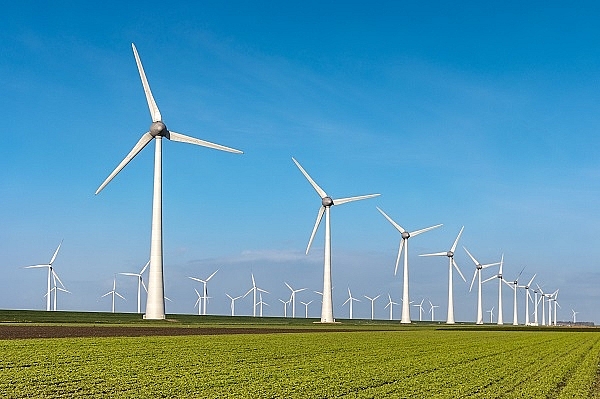Financing a shift towards green energy
 |
| Nguy Thi Khanh |
Nguy Thi Khanh, executive director of Hanoi-based Vietnamese non-profit Green Innovation and Development Centre, writes about the challenges and opportunities for Vietnam in attracting further investment into these projects.
With low-level greenhouse gas emissions, Vietnam has a great window of opportunity to leapfrog fossil fuel investments and experience a smooth transition to a low-carbon future that will benefit both the citizens and the country. A fair competition for fossil fuels and renewable energy generation needs to be developed in order to accelerate the potential of renewable energy in an economically efficient manner.
A level playing field in the energy sector along with political will is required, to avoid locking the country in a fossil fuel structure that involves an increasing risk of stranded assets as well as higher energy dependency. Climate change, together with the required actions, can be seen as an opportunity to redirect Vietnam’s current development model onto a socially just path, leading towards a low-carbon future that would open new financial sources to develop green energy projects.
Climate change is being experienced in varying degrees all over the world. As judged by the frequency, length, and severity of extreme events occurring, Vietnam is one of the countries most affected by climate change in the entire world. With the global goal to limit the earth’s average temperature increase to well below two degrees Celsius, climate change is an increasing threat to the Vietnamese economy.
Globally, climate change already costs an estimated $1.6 trillion per year, and set to rise to over $4 trillion by 2030. Infrastructure damage is the single largest cost incurred. Most infrastructure assets are intended to last for many decades: electricity networks may be in place for 60 years, buildings for over 100 years, bridges and dams for 200 years. Given the long lead times required to build and operate major infrastructure, planning needs to be designed today for tomorrow’s climate. It is time to support governmental bodies from local to national level.
 |
| Financing a shift towards green energy, illustration photo source : shutterstock |
Furthermore, businesses need support to urgently address the gaps in climate change adaptation and to avoid unnecessary loss of life, incomes, and damage to major infrastructure assets. It should be mandatory for foreign financial institutions to ensure that future economic obligations intertwined with large infrastructure projects are not at major risk of climate change-related events.
Locking the country into a coal-powered future comes at high risk. Even though coal-fired power generation seems to be the easiest way to meet the increasing energy demand, renewable energies are becoming cheaper and are close to being cost competitive. So far, the financing costs for solar and wind power come with a high risk premium. Changing the legal framework conditions and removing some of the risk will level the playing field and alter the stranded asset risk for coal-fired power plants accordingly.
Coal imports are increasing the uncertainty of future power prices on one hand and are coming with an increasing energy dependency on the other. Renewables such as wind and solar, with their higher upfront investment costs, are stabilising the power price in the long run, making it predictable and increasing the share of domestically controlled power production.
The high-energy intensity of the Vietnamese economy does not negatively affect the competitiveness of the domestic industry right now. However, inefficient production needs to be considered a potential risk on global export markets. Furthermore, seeing the global trend of de-carbonising the industry, products produced with energy using a high proportion of fossil fuels could be banned or burdened with additional taxes by some countries or markets in the future.
After exploiting most of its hydropower potential, the Vietnamese government turned its attention mainly to coal power to meet future energy needs. The potential of renewable energy has not been fully explored, and climate change is so far not used as an opportunity to shift the current development model onto a low-carbon path.
So far, the Revised Power Development Plan VII planned 42 gigawatts (GW) of new coal, resulting in a share of 42.6 per cent of coal in the 2030 power generation mix. This would make Vietnam the number 4 coal country in the world, directly behind China, the US, and India. That comes alongside a huge increase of energy dependency on foreign resources and with the risk of fluctuating global coal prices adding uncertainty to future power pricing.
Vietnam has much potential for renewable energy. However, due to the national electricity companies’ preference for continued investment in well-known technologies, its reluctance to invest in renewables and a business-as-usual emphasis on entrenched technologies such as coal and large hydropower, very little of this potential has been exploited. The status quo comes with great opportunities for new market players and for the existing utility companies to make use of so-far-unused domestic resources if the framework conditions were suitable.
One of the remaining questions is where financial sources for green energy projects will come from. Firstly, the Vietnamese energy sector needs high investment to cope with the increasing demand. Redirecting financial capital from fossil fuel investments towards renewable energy solutions will be a main source.
A recent study commissioned by a GreenID expert modelled five scenarios to meet Vietnam’s growing energy needs in a low-cost manner, while taking into account external costs by air pollution and carbon emissions. The study shows the most affordable and safest way to meet Vietnam’s future energy needs while complying with the Paris Agreement to cut 30GW of coal power – equivalent to 25 coal-fired power plants. These could be replaced by increasing energy efficiency and renewable energy. Furthermore, this will reduce the pressure of mobilising $60 billion investments for these plants on the one hand, and will result in cost savings of $7 billion per year due to less reliance on imported coal on the other.
While most of the previous investments in the energy sector have been publicly financed, future ones into renewables will attract private investors from various scales. Insurance companies and public equities are interested in financing large-scale wind and solar projects under sufficient legal conditions, whereas households might invest in small-scale generation capacity. Both company and household investment would open new financing sources and immediately reduce public investment needs. As a side effect competition would increase, leading to lower prices for future renewable investments when managed correctly.
The nationally determined contributions (NDCs) revision also opens a way to attract new financial sources. If Vietnam’s conditional (with international support) mitigation targets are calculated based on the remaining global carbon budget, global interest is granted. And if the wider community is still committed to the Paris Agreement, new and sufficient financial support might be achievable. Despite all this, there is a change in the narrative and debate from key decision-makers towards a future powered by more renewables. Looking at the successes of the past and the challenges of the future in Vietnam’s booming and vital economy and energy market, it is crucial to understand how political will can slow down or accelerate renewable energy development in the country.
After years of coal extension, it looks like 2020 will become an important milestone for phasing into renewables and a green growth path, while reducing the country’s dependency on imported coal.
What the stars mean:
★ Poor ★ ★ Promising ★★★ Good ★★★★ Very good ★★★★★ Exceptional
Related Contents
Latest News
More News
- PM orders investment model for North–South high-speed rail (December 22, 2025 | 17:43)
- First members of Danang International Finance Centre revealed (December 22, 2025 | 17:39)
- Securing capital and efficiency for Vietnam’s 2026-2030 growth ambitions (December 17, 2025 | 10:00)
- Driving double-digit growth through green and circular transformation in Vietnam (December 17, 2025 | 09:00)
- Vietnam bucking trend in the global M&A landscape (December 16, 2025 | 14:20)
- Vietnam’s green transition demands collective financial action (December 15, 2025 | 12:00)
- VIR workshop highlights capital and policy for sustainable development (December 15, 2025 | 11:00)
- National Assembly approves pilot mechanisms to accelerate major projects in Hanoi (December 12, 2025 | 11:29)
- Vietnam eases policy approval requirements, simplifies foreign and outbound investments (December 11, 2025 | 17:53)
- Unpacking new momentum in Vietnam’s M&A market (December 10, 2025 | 09:59)

 Tag:
Tag:





















 Mobile Version
Mobile Version